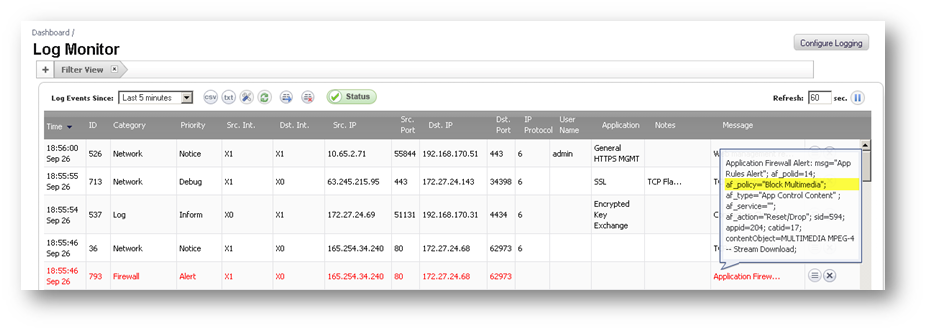Allow YouTube while blocking Multimedia content of other sites.
Description
This article describes how to allow YouTube streaming content while blocking multimedia content of other sites. The method described here uses App Rules policies with App Control Advanced signatures.
Resolution for SonicOS 6.5
This release includes significant user interface changes and many new features that are different from the SonicOS 6.2 and earlier firmware. The below resolution is for customers using SonicOS 6.5 firmware.
Note: The solution described here is for HTTP traffic. This article does not claim to block HTTPS traffic. For this solution to work over HTTPS requires Client DPI-SSL.
Procedure:
| 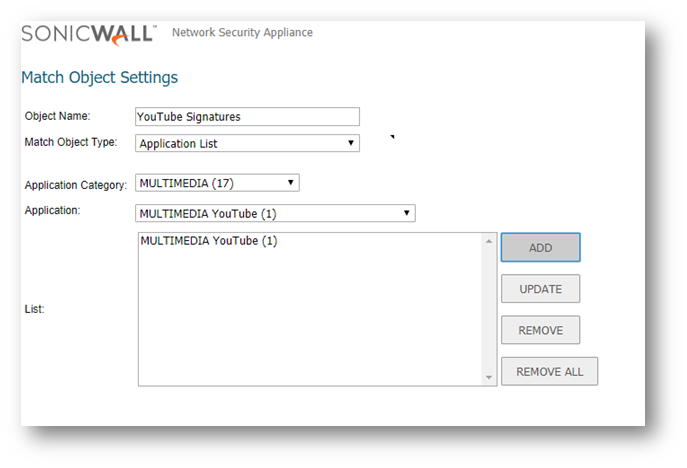 |
Now we create another match object, this time for multimedia content.
| 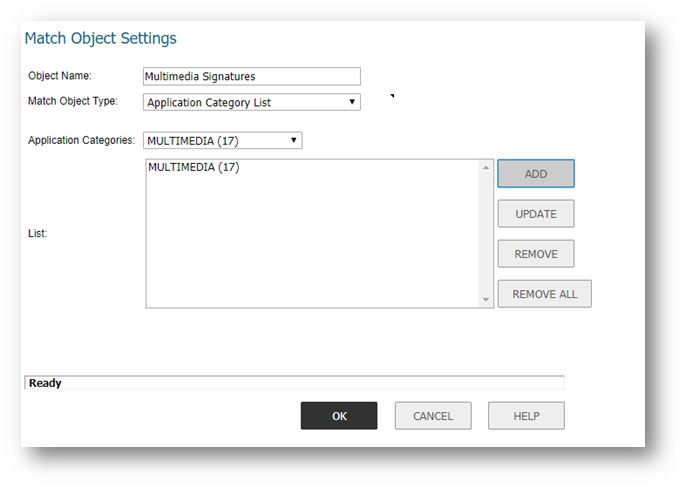 |
We have created two match objects and are now ready to create two App Rule policies referencing each of the above match objects. In order for this to work, the policies must be created in the exact order described here. This is due to the way App Rule policies are prioritized which is, the first policy created has a higher priority than (and therefore above) the subsequent policies. For our particular purpose, we first create the policy to allow YouTube and then the policy to block multimedia content of other sites.
| 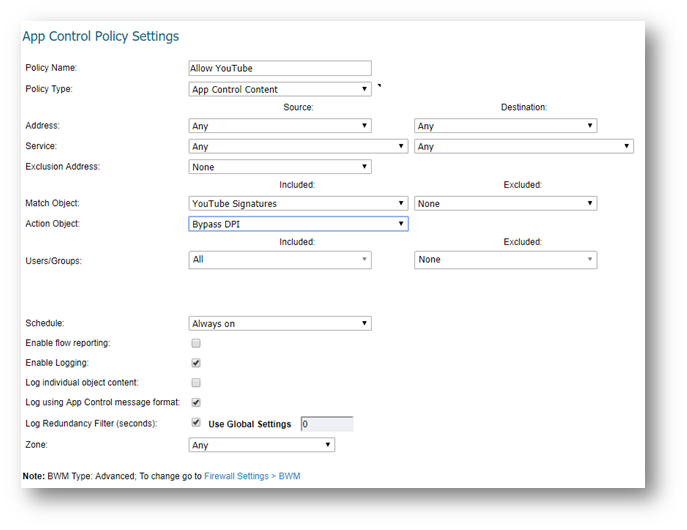 |
We create now a policy to block multimedia content.
| 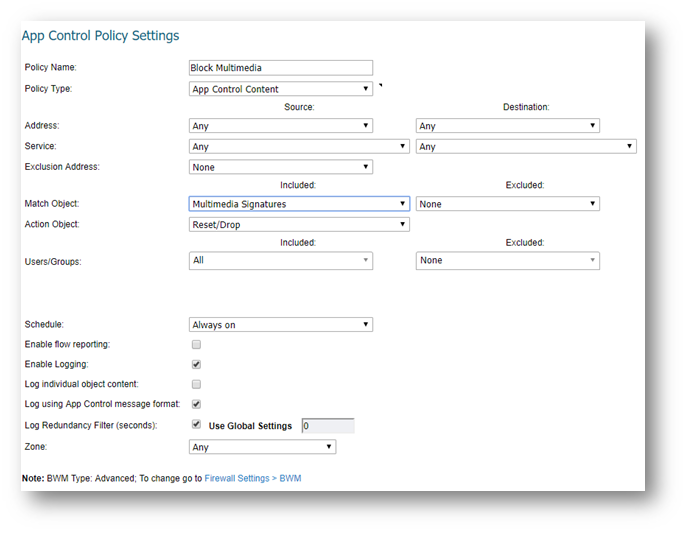 |
Testing
From a host behind the SonicWall, access YouTube and play a video. If you have configured the policies as recommended above, the video will play. Here is a screenshot of the log message generated when one of the App Rule policy is triggered. To know whether the Allow YouTube policy is being triggered, hover the mouse over the details icon of the log message.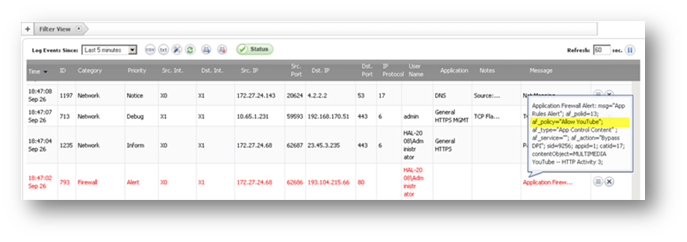
Once you have ascertained that the correct policy is being applied for YouTube traffic, access another streaming website and play multimedia content. If all is well, the second policy will be applied and the content will be blocked. Shown here is a screenshot of the log message generated when Vimeo.com was accessed. By hovering the mouse over the details icon of the log message we know the policy applied was "af_policy=Block Multimedia".
Resolution for SonicOS 6.2 and Below
The below resolution is for customers using SonicOS 6.2 and earlier firmware. For firewalls that are generation 6 and newer we suggest to upgrade to the latest general release of SonicOS 6.5 firmware.
Note: The solution described here is for HTTP traffic. This article does not claim to block HTTPS traffic. For this solution to work over HTTPS requires Client DPI-SSL.
Procedure:
| 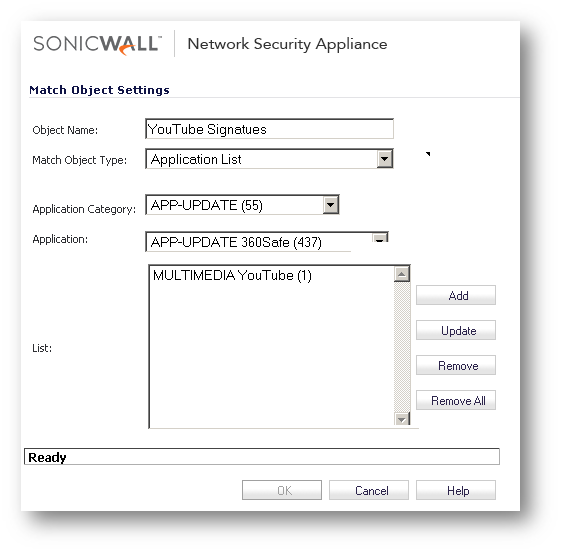 |
Now we create another match object, this time for multimedia content.
| 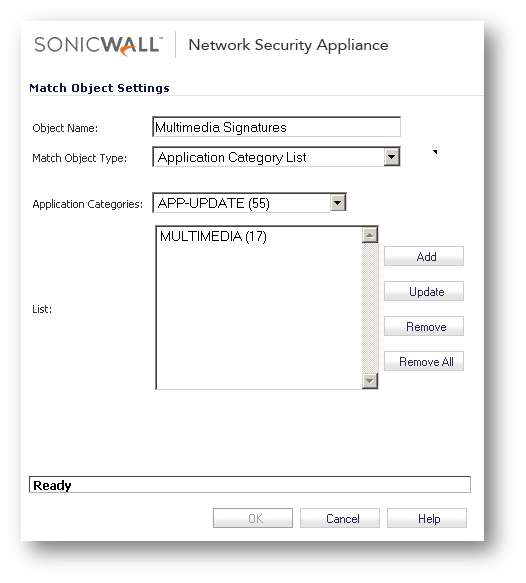 |
We have created two match objects and are now ready to create two App Rule policies referencing each of the above match objects. In order for this to work, the policies must be created in the exact order described here. This is due to the way App Rule policies are prioritized which is, the first policy created has a higher priority than (and therefore above) the subsequent policies. For our particular purpose, we first create the policy to allow YouTube and then the policy to block multimedia content of other sites.
| 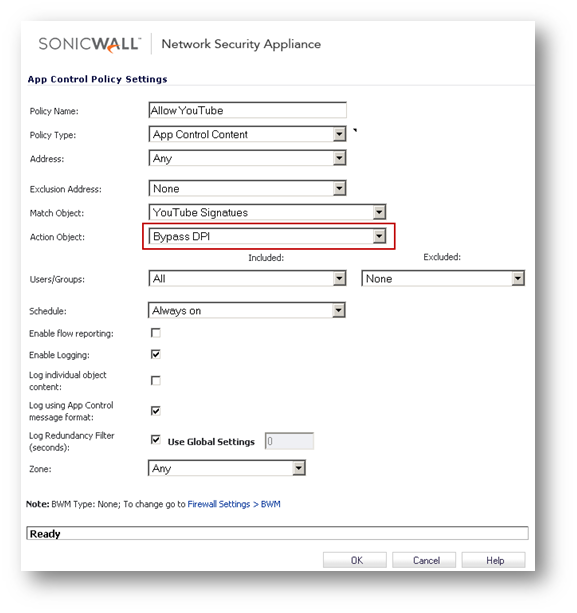 |
We create now a policy to block multimedia content.
| 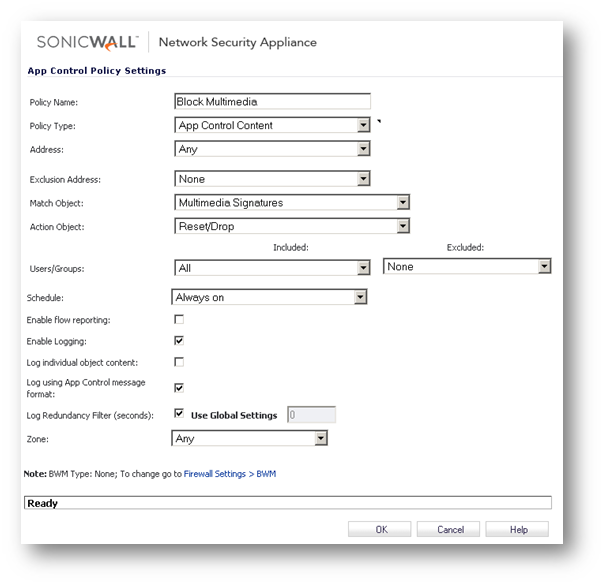 |
Testing
From a host behind the SonicWall, access YouTube and play a video. If you have configured the policies as recommended above, the video will play. Here is a screenshot of the log message generated when one of the App Rule policy is triggered. To know whether the Allow YouTube policy is being triggered, hover the mouse over the details icon of the log message.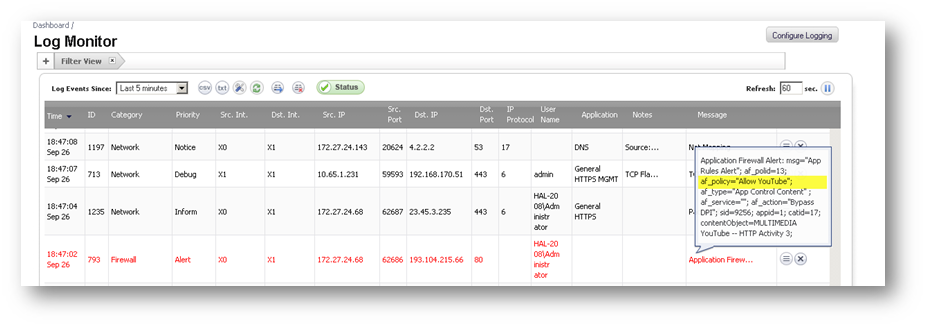
Once you have ascertained that the correct policy is being applied for YouTube traffic, access another streaming website and play multimedia content. If all is well, the second policy will be applied and the content will be blocked. Shown here is a screenshot of the log message generated when Vimeo.com was accessed. By hovering the mouse over the details icon of the log message we know the policy applied was "af_policy=Block Multimedia".